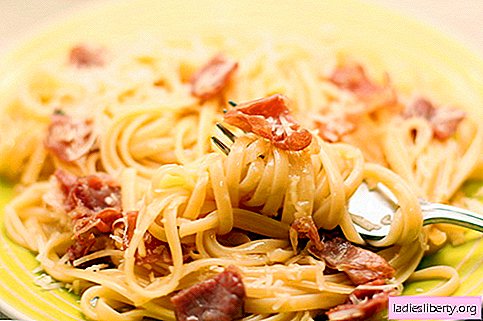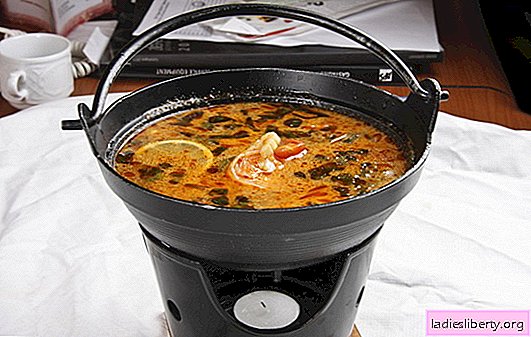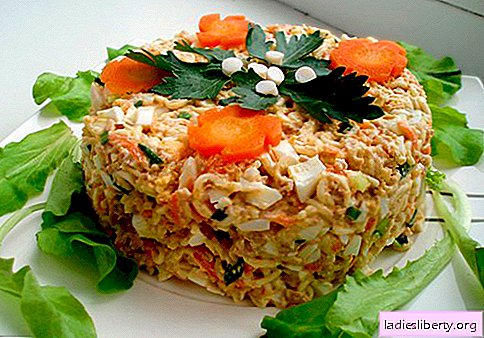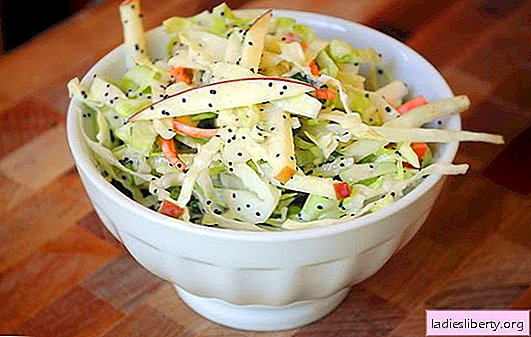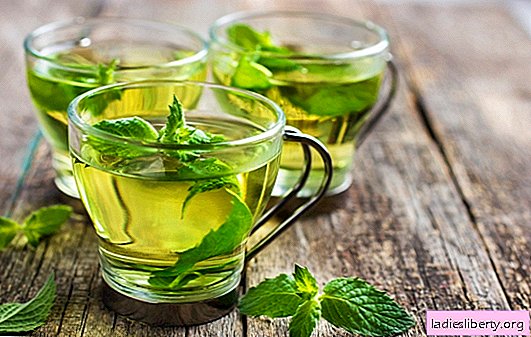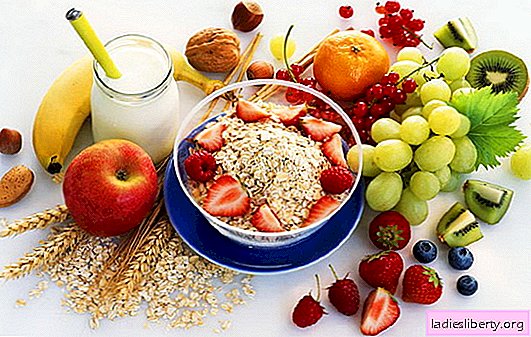
Proteins are complex molecules of various shapes and sizes needed for all life forms.
They are directly involved in almost everything that happens inside our cells and are more diverse than carbohydrates and fats.
General principles of nutrition on a protein-free diet
Protein-free diet, mostly used to treat acute and chronic renal diseases, as well as liver diseases. To combat overweight, its use is not as effective as other types of diets.
Various kidney diseases and severe damage to their functions arise due to the fact that in the body of a sick person accumulate products of protein metabolism, toxins, which lead to self-poisoning of the body. Such harmful substances should be excreted by the kidneys of a person at the same time as urine. If any disturbances in the body occur, the kidneys become inflamed (nephritis), or renal failure occurs, then this process may be disturbed. In this case, a situation may arise in which all toxins will remain in the human body and accumulate there. Also, diets, during which fat breakdown occurs, can cause kidney damage and the release of a large number of toxins. Therefore, for any kidney disease, doctors try to limit the total intake of those same proteins. Diet therapy can be crucial in this.
In chronic encephalopathy, which develops in patients with chronic liver diseases, protein intake is also limited. In acute cases, for a certain period of time, proteins are completely excluded.
What is the essence of a protein-free diet
This is one of the ways to cleanse the body, which is recommended for normalizing metabolism, unloading protein metabolism, eliminating puffiness and weight loss. Remove from the diet foods that can have an irritating effect on the kidneys, an irritating effect on the central nervous and cardiovascular systems (that is, in which there are extractives, various essential oils), and also remove table salt. Extractive substances include citric, malic, oxalic acids.
But it’s important to have protein sources with any diet.. Therefore, they do not completely remove it from the diet, but limit the use to 20% of all substances that enter the body during the day.
A special diet for kidney and metabolic diseases is treatment table No. 7. We will dwell on its features below.
Recommended Products:
• the main part of the diet should be fruits and berries, as well as fruit soups, gravy, juices, compote and kissel made from them;
• vegetables, vegetable salads, soups; onions in any form; greenery;
• nuts;
• bean grains;
• milk products;
• do not exclude rye bread, flour products on yeast without salt;
• you can use cream (with a low percentage of fat content) and refined vegetable oil in cooking;
• any types of cereals are suitable for inclusion in the diet, as well as pasta;
• low-fat fish species: bream, cod, pike perch, pollock, carp, blue whiting, mullet, hake. They can be boiled or baked.
• eggs (no more than 1 yolk per day). Steamed omelette will be delicious.
• jelly, honey, jam. Sugar can be replaced with various sweeteners in tablets;
• sour cream, milk, vegetable, fruit sauces. Flour in this case is not passerized.
• weak tea, coffee with milk, rosehip broth.
Prohibitions on a protein-free diet
The use of these products should be limited to:
• Bread, confectionery and flour products with the addition of soda. Very fresh bread, fried pies, puff and pastry are prohibited.
• Pork and other fatty meats.
• All types of birds.
• Smoked, salted, oily fish.
• Hard boiled eggs and fried eggs.
• Cream, fat cottage cheese and cheese.
• Different types of fat and margarine.
• It is forbidden to conserve, as well as radishes, radishes and mushrooms.
• Eliminate rich soups. You can’t okroshka and green borsch.
• Cream products, chocolate, ice cream.
• Be careful with spices. In a very limited amount, you can use a mixture of peppers. Exclude horseradish and mustard from your diet.
• Natural coffee, cocoa, mineral water, as well as cold water.
Also keep in mind that fried and deep-fried foods, as well as foods used in fast-food restaurants, contribute to gallstones.
If you are prescribed a diet without protein, that is, with a restriction of meat, do not be scared. There are other substitute products. protein, the use of which will replace meat by nutrition and calorie content.
• To smooth the absence of salt (the main component to be excluded), you can use spices in limited quantities: a mixture of peppers, herbs, coriander, etc.
• Milk products. Yogurt and low-fat cottage cheese, cheese are excellent breakfast foods.
• Nuts and seeds. Add nuts instead of meat to any meat salad, and this will be a great substitute for the lack of protein.
• Soy. This product will replace beef or pork meat. In addition, soy is a satisfying, low-calorie product with a rich mineral and vitamin complex, which does not contain harmful cholesterol.
• Beans and lentils. Legumes are detoxifiers of the body. Prepared in compliance with all technologies, they are able to replace protein, and also help to lower cholesterol and blood sugar.
• Whole grains: millet, barley, etc. Most often they are used instead of pasta or rice. Cooked with your favorite sauce, they will give more protein.
• Vegetables. The largest amount of protein from plant foods is found in asparagus, broccoli, cabbage and other dark green vegetables.
A sample menu for the day with a protein-free diet
Important: it is impossible to completely exclude protein from the diet. It is the most important nutritional component of any diet. Organize your meal so that the protein in it is about 20% of all food.
With such a diet, the main thing that must be observed is the minimum consumption of water - 0.5-1 liters per day and frequent fractional snacks about 300-500 grams 4-6 times a day. It is necessary to adhere to this food no more than two weeks.
1st option:
Breakfast: oatmeal in milk;
Lunch: vegetable soup, pasta, fruit salad;
Snack: nuts, dried fruits. A glass of carrot juice before dinner prevents the formation of stones.
Dinner: baked fish, vegetable salad.
2nd option.
Breakfast: oatmeal, rosehip broth.
Lunch: steamed vegetables, soup with bread (without salt)
Dinner: vegetable stew, fruit sauce.
Snacks: baked apples with honey, buckwheat bread with tea.
3rd option.
Breakfast: corn or oatmeal with tea.
Lunch: vegetable pilaf, low-fat fish, rosehip broth.
Dinner: vegetable salad.
Snacks: nuts, jam, berries.
4th option.
Breakfast: vinaigrette, coffee with milk
Lunch: vegetable soup, millet casserole, steam cutlets, fruits.
Snack: rosehip infusion.
Dinner: buckwheat in milk
Protein-free diet of Andreas Moritz
One of the most talked about diets is the Andreas Moritz protein-free diet. It consists of several stages:
1) Preliminary. Within 6 days you need to drink a liter of apple juice. It has a very strong cleansing effect and will help soften gallstones, expand the bile ducts. You need to drink a little throughout the day. Try not to drink juice immediately before, during and for two hours after a meal. It is also not recommended to use it at bedtime.
If you are allergic apple juice, then you can replace it with infusion of loosestrife grass (Gold Coin Grass) and hairworms (Buplerum), which can be purchased at pharmacies or online.
In addition, during this period, do not consume cold drinks and foods, animal products, as well as dairy and fried foods. Do not overeat.
Refrain from taking medication, vitamins, or dietary supplements. Do an enema or professional hydrotherapy.
2) Main. On the sixth day in the morning, eat hot porridge, preferably oatmeal, and for lunch - white rice with steamed vegetables. Refrain from protein foods. After 14 hours, do not eat or drink anything (you can only clean water). Dissolve 4 tbsp. Epsom salt in 3 tbsp. water and divide this mixture into 4 parts. Drink one at 18.00, the next at 20.00. Then mix 2/3 tbsp. grapefruit juice (lemon or orange) and half a glass of olive oil and drink at 22.00. Go to bed next.
3) Final. In the morning, drink 3 servings and at 8:00 - the fourth. For lunch, you can dine on light meals. Usually 6-8 procedures are required.
Important points:
1) Consult a doctor before using a protein-free diet.
2) Everything should be consumed without salt.
3) Products that are eaten with a protein-free diet should be boiled, baked, or fried. To this end, it is very convenient to use a double boiler.
4) The deadline for dieting is 14 days.
5) Eat a little. Serving should not exceed 200-300 grams.
6) The frequency of food intake is 4-6 times a day with a uniform distribution in time.
7) It is recommended to observe bed rest.
8) The amount of fluid consumed should be equal and not exceed the patient's urine volume over the past day. Approximately 1 liter per day is recommended.
9) The use of this diet is not recommended for pregnant women, children, the elderly.
10) Vitamin-mineral complex, taken in conjunction with this diet will give a more effective result for the body as a whole.
The biochemical composition of the diet and energy value should be as follows:
proteins - 25 g (1/3 of animal origin)
fats - 60 g
carbohydrates - 350 g
energy value - 2000 kcal.
An adult needs 2 grams of protein per 1 kg of non-fat body mass.
A protein-free diet is, above all, a therapeutic diet. The high content of carbohydrates in the diet makes it favorable, as it helps to saturate the body with useful substances and properties.
For 14 days, a protein-free diet can lose up to 5 kg. The result, as we see, is not impressive. However, during this time you will receive a complete cleansing and healing of the body, which will be ready to perform its further life support functions. A protein-free diet is not designed to lose weight, but to improve kidney function. It is prescribed in combination with other therapeutic procedures. Take care of yourself and take care of your body on time.

